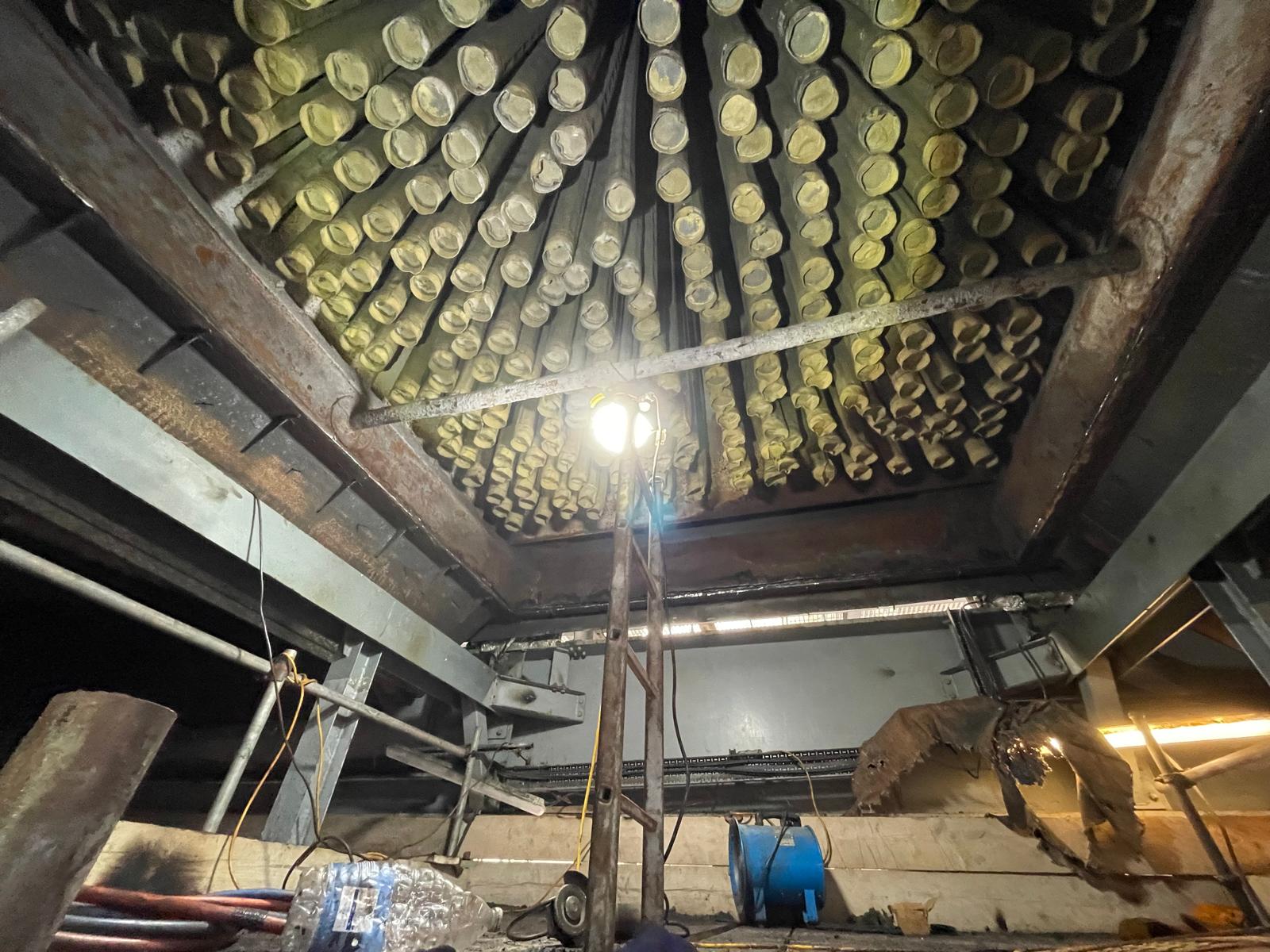Advanced Steelwork Techniques in Flue Gas Treatment Hopper Manufacturing
In the ever-evolving world of industrial manufacturing, the need for innovative and efficient solutions is paramount. One area where this need is particularly critical is in the production of flue gas treatment hoppers. These essential components play a significant role in managing and reducing emissions from industrial processes. This blog explores the advanced steelwork techniques that are transforming the manufacturing of flue gas treatment hoppers, ensuring better performance, durability, and environmental compliance.
Understanding Flue Gas Treatment Hoppers
Flue gas treatment hoppers are crucial in the process of capturing and treating gases emitted from industrial operations. These hoppers are designed to withstand high temperatures and corrosive environments, making the choice of materials and manufacturing techniques vital for their performance and longevity.
The Importance of Advanced Steelwork
Steelwork is at the heart of hopper manufacturing, providing the necessary strength and resilience. Advanced steelwork techniques have emerged as game-changers in this field, offering numerous benefits over traditional methods. These techniques not only improve the structural integrity of the hoppers but also enhance their efficiency in flue gas treatment processes.
Key Advanced Steelwork Techniques
-
Precision Cutting and Shaping:
- Modern steel fabrication employs precision cutting techniques such as laser cutting, water jet cutting, and plasma cutting. These methods allow for intricate designs and shapes to be created with high accuracy, ensuring that each component fits perfectly, reducing the risk of leaks and enhancing the overall efficiency of the hopper.
- Modern steel fabrication employs precision cutting techniques such as laser cutting, water jet cutting, and plasma cutting. These methods allow for intricate designs and shapes to be created with high accuracy, ensuring that each component fits perfectly, reducing the risk of leaks and enhancing the overall efficiency of the hopper.
-
Robotic Welding:
- Welding is a critical process in hopper manufacturing. The advent of robotic welding has revolutionized this aspect by providing consistent, high-quality welds. Robotic systems can perform complex welds with precision, significantly reducing the risk of human error and increasing the durability of the hoppers.
- Welding is a critical process in hopper manufacturing. The advent of robotic welding has revolutionized this aspect by providing consistent, high-quality welds. Robotic systems can perform complex welds with precision, significantly reducing the risk of human error and increasing the durability of the hoppers.
-
Advanced Coating Technologies:
- Coating the steel is essential to protect it from the harsh conditions within a flue gas treatment system. Advanced coating techniques, such as thermal spraying and powder coating, offer superior protection against corrosion and wear. These coatings extend the lifespan of the hoppers and ensure they remain effective over long periods.
- Coating the steel is essential to protect it from the harsh conditions within a flue gas treatment system. Advanced coating techniques, such as thermal spraying and powder coating, offer superior protection against corrosion and wear. These coatings extend the lifespan of the hoppers and ensure they remain effective over long periods.
-
3D Modelling and Simulation:
- The use of 3D modelling and simulation software in the design phase allows engineers to visualize and test the hoppers in virtual environments. This process helps identify potential issues before the manufacturing begins, ensuring that the final product is optimized for performance and durability.
- The use of 3D modelling and simulation software in the design phase allows engineers to visualize and test the hoppers in virtual environments. This process helps identify potential issues before the manufacturing begins, ensuring that the final product is optimized for performance and durability.
-
Automated Assembly Lines:
- Automation in assembly lines enhances the efficiency and consistency of hopper production. Automated systems can handle repetitive tasks with high precision, reducing the time required for manufacturing and ensuring that each hopper meets stringent quality standards.
- Automation in assembly lines enhances the efficiency and consistency of hopper production. Automated systems can handle repetitive tasks with high precision, reducing the time required for manufacturing and ensuring that each hopper meets stringent quality standards.
Benefits of Advanced Steelwork Techniques
-
Enhanced Durability:
- Advanced techniques produce hoppers that are more robust and capable of withstanding extreme conditions, reducing maintenance costs and downtime.
- Advanced techniques produce hoppers that are more robust and capable of withstanding extreme conditions, reducing maintenance costs and downtime.
-
Improved Efficiency:
- Precision engineering ensures that hoppers operate more efficiently, capturing and treating flue gases more effectively and contributing to lower emissions.
- Precision engineering ensures that hoppers operate more efficiently, capturing and treating flue gases more effectively and contributing to lower emissions.
-
Cost-Effectiveness:
- While the initial investment in advanced techniques may be higher, the long-term savings in maintenance, downtime, and operational efficiency make them cost-effective.
- While the initial investment in advanced techniques may be higher, the long-term savings in maintenance, downtime, and operational efficiency make them cost-effective.
-
Environmental Compliance:
- With stricter environmental regulations, advanced steelwork techniques help manufacturers produce hoppers that meet and exceed compliance standards, contributing to a cleaner environment.
Conclusion
The integration of advanced steelwork techniques in the manufacturing of flue gas treatment hoppers represents a significant step forward for the industry. These innovations not only enhance the performance and durability of the hoppers but also ensure that they meet the increasing demands for environmental compliance. As technology continues to evolve, we can expect even more sophisticated methods to emerge, further advancing the field and contributing to a more sustainable industrial future.
By staying at the forefront of these developments, manufacturers can ensure they are delivering the highest quality products, positioning themselves as leaders in the industry. Advanced steelwork techniques are not just an improvement—they are a necessity for the future of flue gas treatment hopper manufacturing. For specialist advice and a no-obligation quotation, call IME on 02085996570 or email sales@imegroup.co.uk.

